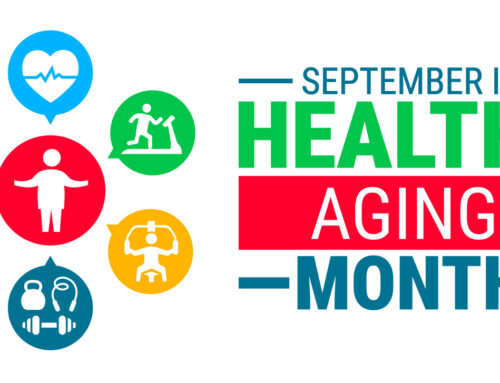The COVID-19 pandemic put many essential workers on the frontlines, but few were exposed to the dangers as the nurses working directly with patients. We owe them a huge debt of gratitude for putting their lives at risk to help others. May 6 through May 12 was officially Nurses Week for 2021, but one week is hardly enough to celebrate our gratitude. FirstLantic, as a healthcare organization, is honored to have some of the most dedicated nurses working tirelessly on behalf of our patients. So, in this blog, we celebrate them and recognize three other American nurses who were pioneers in improving patient care.
Dorothea Dix
Dorothea Lynde Dix (April 4, 1802 – July 17, 1887) spent 40 years of her life lobbying for mental health care. Early in her career, Dorothea was a teacher and advocated for education for poor children. However, she is believed to have suffered from depression and had a breakdown that may have been responsible because she devoted the rest of her life to helping the mentally ill. After her breakdown, she went to Europe to recover her health and met British social reformers who inspired her. These reformers included Elizabeth Fry, Samuel Tuke, and William Rathbone. The Rathbones were prominent reformers and believed that government should play an active role in social welfare. They also worked to improve care for the mentally ill by exposing the deplorable treatment they received. This inspired her to tour facilities when she returned to the U.S. She traveled to numerous states, lobbied for more humane treatments, got new legislation passed, and raised funds to open new facilities. In total, Dix was responsible for founding 32 mental health institutions to facilitate the nation’s growing need for better mental health care. During the Civil War, she was also the superintendent of female nurses for the Union Army and oversaw a staff of 6,000 hospital nurses. At the end of the war, Dix helped raise funds for the national monument to deceased soldiers at Fortress Monroe. Following the war, she resumed her crusade to improve the care of prisoners, the disabled, and the mentally ill. Dix spent the remainder of her life advocating for those who could not advocate for themselves. She died in 1887, but we will never forget her tireless work on behalf of others.
Clara Barton
Clarissa Harlowe Barton (December 25, 1821 – April 12, 1912) was an American nurse known as the Angel of the Battlefield during the Civil War. Recognizing that many men were suffering because of the lack of supplies, she went on a one-woman crusade to raise donations, and singlehandedly was responsible for saving the lives of numerous soldiers. After the war, she organized and ran the Office of Missing Soldiers to find and identify those men killed or missing in action. Barton and her assistants helped locate more than twenty-two thousand missing men and worked to properly bury thousands who died in prison camps. Later, under doctor’s orders to rest both mentally and physically, Barton went to Switzerland and met the founder of the International Red Cross. She became impressed by the organization’s work and eventually was asked by the founder to start the American Red Cross and find benefactors. Barton ran the organization from 1881 to 1904, when she resigned at the age of 83. She went on to write her autobiography and lived until the age of 90.
Mary Breckinridge
Mary Carson Breckinridge (February 17, 1881 – May 16, 1965) was an American nurse-midwife and the Frontier Nursing Service (FNS) founder, which provided comprehensive family medical care to the mountain people of rural Kentucky. Born into a privileged and politically connected family, Breckinridge was expected to marry well and raise children like other women of her stature. However, she experienced the loss of her first husband and two children. These losses were primarily responsible for her choosing a path to pursue nursing to help families and children. After the death of her first husband, Breckinridge pursued higher education at St. Luke’s Hospital of Nursing in New York for three years and graduated in 1910, becoming a registered nurse. After the deaths of her two children and the dissolution of her second marriage, she worked in the slums of Washington D.C., supervising nurses during the 1918 influenza epidemic. Breckinridge then spent three years with the American Committee for Devastated France, which helped her imagine a plan for public health in rural Kentucky with nurse-midwives situated at the center of the system. To design the details of her project, she took deliberate educational and administrative steps which would enable her to return to Kentucky with the formal education, practical experience, and organizational connections to create the Frontier Nursing Service. FNS served remote and impoverished areas off the road and rail system but accessible by horseback. She sought to professionalize American nurse-midwives to practice autonomously in homes and decentralized clinics. Breckinridge built a large log house in Wendover, Kentucky, to serve as her home and the Frontier Nursing Service headquarters. In 1939 she started her midwifery school and led the Frontier Nursing Service until her death on May 16, 1965. Upon her death, FNS had treated nearly 58K patients and delivered over 14,500 babies, with only 11 maternal deaths. The Frontier Nursing University continues to provide training for professional nurse-midwives to this day.
In summary, each of these three women represented the best of their profession. They were innovative and worked tirelessly to help others. And if they were alive today, they would recognize that same pioneering spirit in modern-day nurses who have faced a relentless pandemic with grace and courage.
To read more FirstLantic blogs, click here
To find out more about home healthcare, click here
 AVAILABLE 24 HOURS A DAY/7 DAYS A WEEK
AVAILABLE 24 HOURS A DAY/7 DAYS A WEEK Careers
Careers







